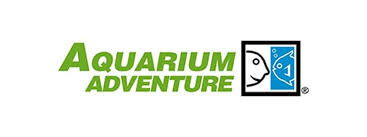Feeding Fish
FEEDING FISH
It's been said that keeping an aquarium provides relaxation. There have been scientific studies done that show looking at an aquarium lowers blood pressure and calms the nerves but most importantly----it's fun!
It's fun to watch the fish interact with each other in their environment. It's fun to collect different kinds and colors of fish. Also, at the top of the fun list ---- FEEDING THE FISH! Who hasn't dug deep into their pockets for change to put in the "food dispensing machines" at the zoo and aquarium in order to feed the animals?
Feeding the fish is not only fun but very important in maintaining their regular care. In their natural environment, fish spend a majority of their time hunting for and grazing on food. In an aquarium we must help supplement that by providing the right types and amounts of food.
It is not as simple as just dropping in some food without some understanding of the parameters involved with keeping fish in an aquarium. The aquarium is an artificial environment we have set up to keep our fish. The filtration system we employ to run it, maintains their environment (the water quality). We don't want to pollute their water environment and improper feeding could do just that.
Many kinds of foods are available as there are many types of fish feeding behaviors. There are fish that eat at the surface, fish that eat off the bottom, fish that off of plants, fish that eat off of tree trunks submerged in the water and fish that hunt and peck throughout their environment. The location of the fish's mouth tells a lot about the type of feeder it is and where it finds its food. For example, fish that have mouths located towards the top of their body, generally feed at the surface of the water. Fish with mouths located on their underside feed off the bottom, for example, scavengers. Some fish are herbivores (eat plants and algae), some carnivores (eat other fish and animals) and some are omnivores (eat both).
Most aquariums are made up with many kinds of fish and so, many kinds of feeding types, which can become confusing and a challenge for fish keepers. Because today we have so many good aquarium fish food choices available, this can be an easy and fun challenge to overcome. There are foods made and designed to work for all fish feeding types and mixing them up and feeding a varied diet insures all fish get what they need.
Fish respond to their food ----- this is what makes it fun. First, they usually attack it, reminiscent of a "shark feeding frenzy". This occurs because they are being fed occasionally throughout the day rather than their natural instinct to graze all day long in their natural environment. Second, fish have the ability to lighten or darken their coloration to help camouflage themselves in their environment and to show emotion (attracting the opposite sex). When fish feed, they get excited and strongly intensify their color. This means the beautiful, bright colorful fish become even more so. It's like turning on a neon light!
Because fish spend all day hunting for and grazing on food, it is best for their health and well-being to feed them in your aquarium several times a day. Here in lies the challenge, the several feedings a day have to be very small, so as not to cause a water quality problem from too much uneaten food. When food is put in, it should never reach the bottom (unless we are feeding bottom feeders), if it does then too much was put in at that time.
So, a little bit (pinch) goes in so all of the fish eat it before it reaches the bottom, then a little more can be put in so all of the fish eat it before it reaches the bottom and so on for about 3 minutes ---- this routine can be done two or three times a day. For bottom feeding fish, 1 wafer or tablet (special "bottom" fish food) can be fed for every two or three bottom fish every other day. This is all much generalized and every aquarium will have its own special mix of fish and feeding regimes will need to be adjusted.
There are many kinds of foods – live, frozen, freeze-dried, prepared pellets, flakes and liquids. All of these can be used and varied amongst the different types of fish in your aquarium. Mix and match to keep your fish interested, stimulated and healthy.
